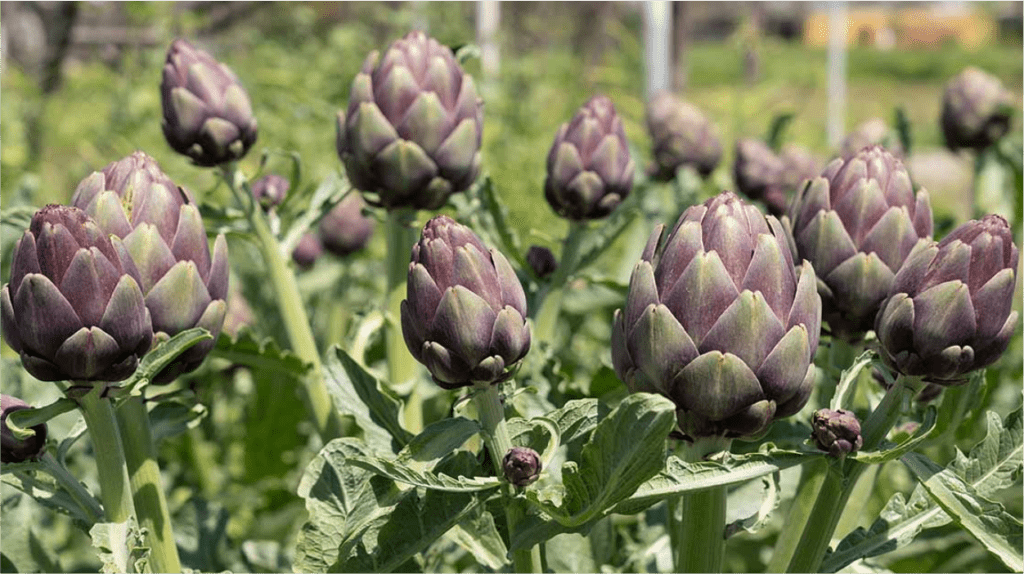In this article, we will address some of the outdoor plants and their health benefits both physically and psychologically. We certainly crave for fresh air, open places and greenery when we get upset . It soothes the mood and opens up different avenues of mind to tackle the issue. The plants have this effect on our body and mind. The outdoor plants do not only provide us fresh air, and natural beauty, but it also improves our mental strength and agony. Studies show that fatigue can be reduced and cognition can be improved if people spend time with nature and greenery. Anyone of any age can enjoy the plantation, gardening and green space. The outdoor plants boost air quality, decrease risk of illness and encourage healthy eating habits. Outdoor plants also improves mood, boosts self esteem and relieves stress and anxiety.

Health Beneficial Outdoor Plants
1. GINGER: Ginger is one of the healthiest and tastiest spices available. The root is used throughout the world in almost all the available cuisines.
Ginger is widely used as a spice and has medicinal benefits too. It grows as a herb with a false stem and has narrow blade leaves. It requires a warm and humid climate with average rainfall and therefore Southwest and Northeast India is best for its production.
Ginger helps in motion sickness, chronic indigestion, and menstrual pain and prevents Alzheimer. The berries fights infection and lowers blood cholesterol too. It has biochemical compounds and nutrients in it which is beneficial for both body and mind.
2. MARIGOLD: Marigold is a perennial herbaceous plant which belongs to the family of Sunflower. The plant is native to America, but some species are grown throughout the world. It has a musky smell and is found in ample colors including yellow, orange and red.
Apart from the beauty, it has health benefits too. The flower acts as an immunity booster and Alleviates skin disease. It helps in reduction in menstrual pain, is good for skin and hair too. It helps in treatment of mouth ulcers, joint pain , fungal infections, eye infection and also repels bugs and mosquitoes.
3. CAYENNE PEPPER: It belongs to Capsicum family and used to provide hotness to the dishes. These are generally long, mostly red colored, curved tips and hung from the bush. The pepper is a Native American plant and has been used as spice and medicine since long.

It helps in the enhancement of blood circulation, aids bad throat, headache, and joint pain, clears nasal congestion and improves Psoriasis, a skin disease. It boosts metabolism and helps in weight loss too.
4. INDIAN GOOSEBERRY: Indian Gooseberry or Amla is cultivated throughout the world as a flowering tree. The berries are small, bright yellow colored and are sour in taste.

These berries are used in day to day food and are one of the medicinal plants. Amla contains high concentration of Vitamin C and thus is good for skin, hair and memory. It helps in recovery of illness, digestion, and controls diabetes and eye infection. It acts as an immunity booster and antioxidants in Amla benefit brain health and memory.
5. SPINACH: Spinach originated in Persia and is leafy vegetable loaded with nutrients and antioxidants. Spinach has a high amount of water and fiber which helps in digestion and is full of Vitamin A, C and K, Iron & calcium.

It helps in managing diabetes, healthy bones and relaxes the body and muscle. The leaves promotes eye health and increases energy in the body. It helps in stress management, reduces the tumor growth and moderates blood pressure.
6. ARTICHOKE: Artichoke is a perennial plant used for both cooking and medicines. The edible part is flower bud and contains Vitamin K, Magnesium, phosphorus and sodium.
It helps in maintaining Cholesterol level, regulates blood pressure and improves liver health. Artichoke treats indigestion, cures constipation and diarrhea and balances the intestinal bacteria. It helps to lower blood sugar and has anti cancer effects too. It is a low carb food which also helps in weight loss.


